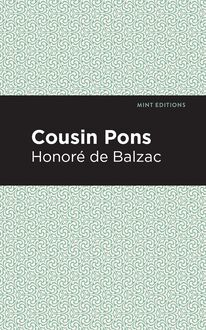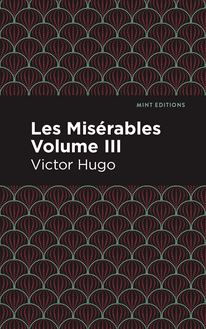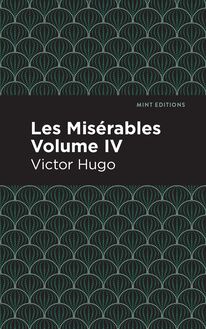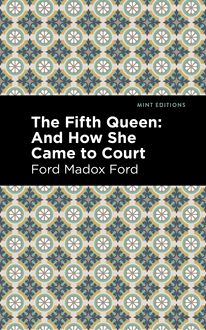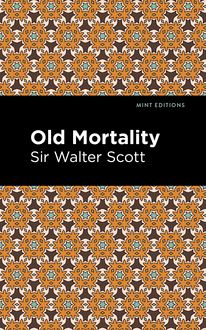-
 Univers
Univers
-
 Ebooks
Ebooks
-
 Livres audio
Livres audio
-
 Presse
Presse
-
 Podcasts
Podcasts
-
 BD
BD
-
 Documents
Documents
-
- Cours
- Révisions
- Ressources pédagogiques
- Sciences de l’éducation
- Manuels scolaires
- Langues
- Travaux de classe
- Annales de BEP
- Etudes supérieures
- Maternelle et primaire
- Fiches de lecture
- Orientation scolaire
- Méthodologie
- Corrigés de devoir
- Annales d’examens et concours
- Annales du bac
- Annales du brevet
- Rapports de stage
La lecture à portée de main
Vous pourrez modifier la taille du texte de cet ouvrage
Découvre YouScribe en t'inscrivant gratuitement
Je m'inscrisDécouvre YouScribe en t'inscrivant gratuitement
Je m'inscrisEn savoir plus
Vous pourrez modifier la taille du texte de cet ouvrage
En savoir plus

Description
Imagine a plague so horrific, only forty percent of the population lived to tell the tale. Written as a first-person account of the world’s most dangerous pandemic, the mysterious narrator bears witness to a society that has seemingly given up hope during terrifying times.
. From mounting death tolls, to horrific bodily ailments, contracting the Black Plague was considered a fate worse than death. Combining his own experiences within each of the two stories, the enigmatic narrator, known only by the initials, H.F., gives a dark and detailed account of one of the most horrific pandemics in human history. H.F. recounts two stories of uniquely different Londoners doing everything in their power to avoid contracting the plague. One story tells of a poor man who takes shelter on his boat, away from his infected wife and child. This man uses his boat to bring provisions to various communities by the water, doing all he can to support sick families. The other story is describes a group of three men, each of different professions, who escape the village in an effort to survive together off the land.
Bearing uncanny similarities to the Coronavirus spreading across the globe today, A Journal of the Plague Year is, perhaps, a comforting reminder that times could always be worse.
This version contains an informative new note about the author and a professionally typeset manuscript. With a stunning and eye-catching cover, this Mint Edition book is a beautiful edition to any classics bookshelf.Sujets
Informations
| Publié par | Mint Editions |
| Date de parution | 07 avril 2020 |
| Nombre de lectures | 0 |
| EAN13 | 9781513263861 |
| Langue | English |
| Poids de l'ouvrage | 3 Mo |
Informations légales : prix de location à la page 0,0500€. Cette information est donnée uniquement à titre indicatif conformément à la législation en vigueur.
Extrait
A Journal of the Plague Year
Daniel Defoe
A Journal of the Plague Year was first published in 1722.
This edition published by Mint Editions 2020.
ISBN 9781513263311 | E-ISBN 9781513263861
Published by Mint Editions®
minteditionbooks.com
Publishing Director: Jennifer Newens
Project Manager: Gabrielle Maudiere
Design & Production: Rachel Lopez Metzger
Being observations or memorials of the most remarkable occurrences, as well public as private, which happened in London during the last great visitation in 1665. Written by a Citizen who continued all the while in London. Never made public before.
It was about the beginning of September, 1664, that I, among the rest of my neighbours, heard in ordinary discourse that the plague was returned again in Holland; for it had been very violent there, and particularly at Amsterdam and Rotterdam, in the year 1663, whither, they say, it was brought, some said from Italy, others from the Levant, among some goods which were brought home by their Turkey fleet; others said it was brought from Candia; others from Cyprus. It mattered not from whence it came; but all agreed it was come into Holland again.
We had no such thing as printed newspapers in those days to spread rumours and reports of things, and to improve them by the invention of men, as I have lived to see practised since. But such things as these were gathered from the letters of merchants and others who corresponded abroad, and from them was handed about by word of mouth only; so that things did not spread instantly over the whole nation, as they do now. But it seems that the Government had a true account of it, and several councils were held about ways to prevent its coming over; but all was kept very private. Hence it was that this rumour died off again, and people began to forget it as a thing we were very little concerned in, and that we hoped was not true; till the latter end of November or the beginning of December 1664 when two men, said to be Frenchmen, died of the plague in Long Acre, or rather at the upper end of Drury Lane. The family they were in endeavoured to conceal it as much as possible, but as it had gotten some vent in the discourse of the neighbourhood, the Secretaries of State got knowledge of it; and concerning themselves to inquire about it, in order to be certain of the truth, two physicians and a surgeon were ordered to go to the house and make inspection. This they did; and finding evident tokens of the sickness upon both the bodies that were dead, they gave their opinions publicly that they died of the plague. Whereupon it was given in to the parish clerk, and he also returned them to the Hall; and it was printed in the weekly bill of mortality in the usual manner, thus—
Plague, 2. Parishes infected, 1.
The people showed a great concern at this, and began to be alarmed all over the town, and the more, because in the last week in December 1664 another man died in the same house, and of the same distemper. And then we were easy again for about six weeks, when none having died with any marks of infection, it was said the distemper was gone; but after that, I think it was about the 12th of February, another died in another house, but in the same parish and in the same manner.
This turned the people’s eyes pretty much towards that end of the town, and the weekly bills showing an increase of burials in St Giles’s parish more than usual, it began to be suspected that the plague was among the people at that end of the town, and that many had died of it, though they had taken care to keep it as much from the knowledge of the public as possible. This possessed the heads of the people very much, and few cared to go through Drury Lane, or the other streets suspected, unless they had extraordinary business that obliged them to it
This increase of the bills stood thus: the usual number of burials in a week, in the parishes of St Giles-in-the-Fields and St Andrew’s, Holborn, were from twelve to seventeen or nineteen each, few more or less; but from the time that the plague first began in St Giles’s parish, it was observed that the ordinary burials increased in number considerably. For example:—
The like increase of the bills was observed in the parishes of St Bride’s, adjoining on one side of Holborn parish, and in the parish of St James, Clerkenwell, adjoining on the other side of Holborn; in both which parishes the usual numbers that died weekly were from four to six or eight, whereas at that time they were increased as follows:—
Besides this, it was observed with great uneasiness by the people that the weekly bills in general increased very much during these weeks, although it was at a time of the year when usually the bills are very moderate.
The usual number of burials within the bills of mortality for a week was from about 240 or thereabouts to 300. The last was esteemed a pretty high bill; but after this we found the bills successively increasing as follows:—
This last bill was really frightful, being a higher number than had been known to have been buried in one week since the preceding visitation of 1656.
However, all this went off again, and the weather proving cold, and the frost, which began in December, still continuing very severe even till near the end of February, attended with sharp though moderate winds, the bills decreased again, and the city grew healthy, and everybody began to look upon the danger as good as over; only that still the burials in St Giles’s continued high. From the beginning of April especially they stood at twenty-five each week, till the week from the 18th to the 25th, when there was buried in St Giles’s parish thirty, whereof two of the plague and eight of the spotted-fever, which was looked upon as the same thing; likewise the number that died of the spotted-fever in the whole increased, being eight the week before, and twelve the week above-named.
This alarmed us all again, and terrible apprehensions were among the people, especially the weather being now changed and growing warm, and the summer being at hand. However, the next week there seemed to be some hopes again; the bills were low, the number of the dead in all was but 388, there was none of the plague, and but four of the spotted-fever.
But the following week it returned again, and the distemper was spread into two or three other parishes, viz., St Andrew’s, Holborn; St Clement Danes; and, to the great affliction of the city, one died within the walls, in the parish of St Mary Woolchurch, that is to say, in Bearbinder Lane, near Stocks Market; in all there were nine of the plague and six of the spotted-fever. It was, however, upon inquiry found that this Frenchman who died in Bearbinder Lane was one who, having lived in Long Acre, near the infected houses, had removed for fear of the distemper, not knowing that he was already infected.
This was the beginning of May, yet the weather was temperate, variable, and cool enough, and people had still some hopes. That which encouraged them was that the city was healthy: the whole ninety-seven parishes buried but fifty-four, and we began to hope that, as it was chiefly among the people at that end of the town, it might go no farther; and the rather, because the next week, which was from the 9th of May to the 16th, there died but three, of which not one within the whole city or liberties; and St Andrew’s buried but fifteen, which was very low. ’Tis true St Giles’s buried two-and-thirty, but still, as there was but one of the plague, people began to be easy. The whole bill also was very low, for the week before the bill was but 347, and the week above mentioned but 343. We continued in these hopes for a few days, but it was but for a few, for the people were no more to be deceived thus; they searched the houses and found that the plague was really spread every way, and that many died of it every day. So that now all our extenuations abated, and it was no more to be concealed; nay, it quickly appeared that the infection had spread itself beyond all hopes of abatement. That in the parish of St Giles it was gotten into several streets, and several families lay all sick together; and, accordingly, in the weekly bill for the next week the thing began to show itself. There was indeed but fourteen set down of the plague, but this was all knavery and collusion, for in St Giles’s parish they buried forty in all, whereof it was certain most of them died of the plague, though they were set down of other distempers; and though the number of all the burials were not increased above thirty-two, and the whole bill being but 385, yet there was fourteen of the spotted-fever, as well as fourteen of the plague; and we took it for granted upon the whole that there were fifty died that week of the plague.
The next bill was from the 23rd of May to the 30th, when the number of the plague was seventeen. But the burials in St Giles’s were fifty- three—a frightful number!—of whom they set down but nine of the plague; but on an examination more strictly by the justices of peace, and at the Lord Mayor’s request, it was found there were twenty more who were really dead of the plague in that parish, but had been set down of the spotted-fever or other distempers, besides others concealed.
But those were trifling things to what followed immediately after; for now the weather set in hot, and from the first week in June the infection spread in a dreadful manner, and the bills rose high; the articles of the fever, spotted-fever, and teeth began to swell; for all that could conceal their distempers did it, to prevent their neighbours shunning and refusing to converse with the
-
 Univers
Univers
-
 Ebooks
Ebooks
-
 Livres audio
Livres audio
-
 Presse
Presse
-
 Podcasts
Podcasts
-
 BD
BD
-
 Documents
Documents
-
Jeunesse
-
Littérature
-
Ressources professionnelles
-
Santé et bien-être
-
Savoirs
-
Education
-
Loisirs et hobbies
-
Art, musique et cinéma
-
Actualité et débat de société
-
Jeunesse
-
Littérature
-
Ressources professionnelles
-
Santé et bien-être
-
Savoirs
-
Education
-
Loisirs et hobbies
-
Art, musique et cinéma
-
Actualité et débat de société
-
Actualités
-
Lifestyle
-
Presse jeunesse
-
Presse professionnelle
-
Pratique
-
Presse sportive
-
Presse internationale
-
Culture & Médias
-
Action et Aventures
-
Science-fiction et Fantasy
-
Société
-
Jeunesse
-
Littérature
-
Ressources professionnelles
-
Santé et bien-être
-
Savoirs
-
Education
-
Loisirs et hobbies
-
Art, musique et cinéma
-
Actualité et débat de société
- Cours
- Révisions
- Ressources pédagogiques
- Sciences de l’éducation
- Manuels scolaires
- Langues
- Travaux de classe
- Annales de BEP
- Etudes supérieures
- Maternelle et primaire
- Fiches de lecture
- Orientation scolaire
- Méthodologie
- Corrigés de devoir
- Annales d’examens et concours
- Annales du bac
- Annales du brevet
- Rapports de stage

